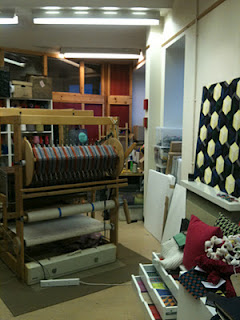My final proposal is to create a movable and changeable exhibition screen in the form of digital tiles. The installation would originally show my Manchester inkblots which are based upon marks and memories that have been made in Manchester in the past, however the screen could then be used a single screen or multiple screens to show new students and staff artwork as marks they have made in Manchester.
Concentrating on the idea of interaction and change, I wanted the tiles to facilitate new patterns and marks being made from my designs which is why the tiles slide to change position on the wall.This way my original designs will never become stagnant or 'boring'. The movement will also allow variation for the digital exhibitions that can be uploaded onto it.
I think digital exhibitions could be a very new, exciting and practical way of students to show their work in a public environment. The art world will always hands on and traditional however it is becoming increasingly modern and digital and I think that this screen could help students to begin to show their work in a digital way, ready for their working careers.
As the screen would be of a substantial size and the tiles would be in large numbers, I needed to come up with a way to allow anyone to be able to move the screens interactively. This shows itself in the form of a smaller replica of the tiles lower down on the wall. These would be digitally connected to the working tiles and act like a sliding puzzle remote. For example when you move a tile on the remote, the corresponding larger tile would move on the wall above. I think this is an easy, simple and fun way of interacting with the screen.
The screen could be installed inside the new building in a large space such as the reception. However, I think a better idea would be to have it on the large blank wall on the side of the new art school so that the public could see the work as well.
I wanted my final design to be new, exciting and useable and I think that the PIXEL SCREEN achieves this.

















































